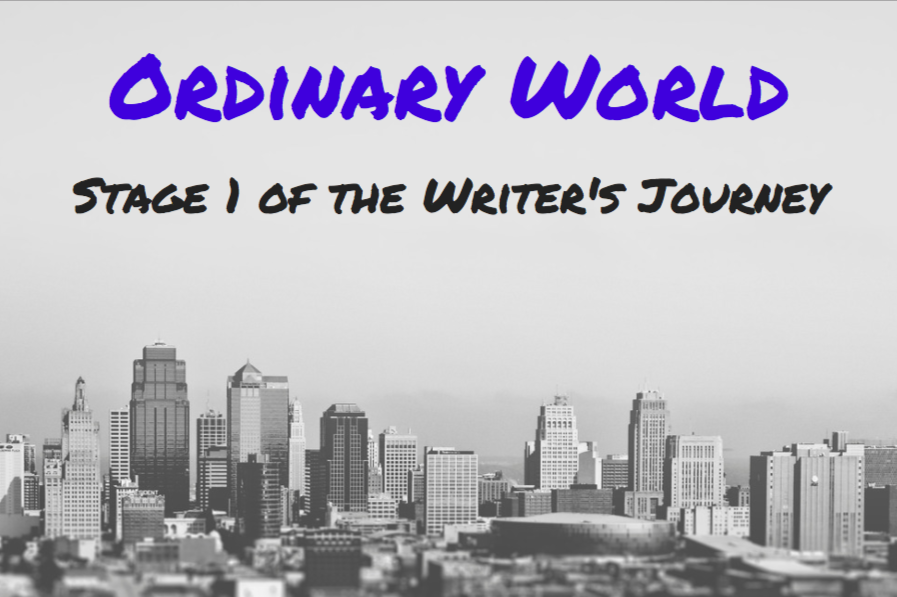Because everyone loves a good story
Stage One: The Ordinary World

Luke Skywalker does farm chores for his Uncle Owen on Tatooine. The Pevensie children begin their Narnian adventure in the quiet old house of Professor Kirke. Harry Potter starts out in a cookie cutter house on Privet Drive.
That is to say, every adventure begins in an Ordinary World.
The Importance of the Ordinary
In Christopher Vogler’s book The Writer’s Journey, the first stage of The Hero’s Journey is that of the Ordinary World. “The Special World of the story is only special if we can see it in contrast to a mundane world of everyday affairs from which the hero issues forth,” says Vogler (85). But does that mean it has to be ordinary in our sense of the word? No way. What’s ordinary to Luke Skywalker is certainly not ordinary to us, unless you happen to work on a desolate moisture farm on a two-sun planet. The whole point of the Ordinary World is to show us what reality is like for our hero—just a day in the life, if you will.
Sounds pretty simple, right? But don’t be deceived. The audience may see just a day in the life, but a good writer has much more going on underneath. Since the beginning of a story is the first thing an audience encounters, it’s important to start off right and make it count. That’s why, when it’s done well, the Ordinary World can prepare the audience for the whole rest of the story.
Fitting a Lot into the Ordinary
For example, a good Ordinary World scene will accomplish all kinds of things, like introducing us to the hero, providing a contrast for the Special World, foreshadowing upcoming action, showing us what’s missing in the hero or in the world, and even introducing the theme of the whole story.
Zow! Pulling off a good Ordinary World scene is more pressure than the first day of junior high! But there are still plenty of stories that accomplish all that and more.
In my opinion, two of the most important questions to answer in the Ordinary World are “Who is the hero?” and “What is at stake?” We want to meet our hero, see her reactions, find out what makes her tick. And we want to know what’s wrong in the hero’s world. Is he lacking something? Is his world in danger? “Scripts often fail because the stakes simply aren’t high enough. A story in which the hero will only be slightly embarrassed or inconvenienced if he fails is likely to get the ‘So what?’ reaction from readers” (94). And that, my friends, is not the reaction any writer is going for.
In my opinion, two of the most important questions to answer in the Ordinary World are “Who is the hero?” and “What is at stake?”
Examples from The Hobbit
So, as promised, I’m going to find all 12 stages of The Hero’s Journey in Tolkien’s The Hobbit. Thankfully, this one is easy to find; everyone knows that the Ordinary World of Bilbo Baggins is the Shire. When the story opens, we see Bilbo just chillaxing, standing next to the freshly-painted door of his cozy little hobbit hole. He’s smoking his long, wooden pipe and feeling comfortable and happy. His meals are regular (and frequent), his days are unhurried, and his life is his own. What could possibly go wrong in this sunny little corner of the Shire?
Oh, what indeed?
The fact that his world is so perfect is a hint at what’s at stake for him: an adventure would most certainly change Bilbo’s routine, his personality, and his life. But we have to meet the dwarves before we can discover that the stakes are even higher. And at that point, The Hobbit will progress from the Ordinary World to the next stage: the Call to Adventure!
Today’s Question: Think of the Ordinary World of a book, movie, or story you know. How does it do a good job of introducing the hero?
Sources:
Vogler, Christopher. The Writer’s Journey: Mythic Structure for Writers, Second Edition. Studio City: Michael Wiese Productions, 1998.
Tolkien, J.R.R. The Hobbit. New York: Ballantine Books, 1937.

Pingback: Peter Pan and the Hero's Journey – Past Watchful Dragons
Pingback: The Yearling and the Hero's Journey – Past Watchful Dragons
Barry Allen was just an ordinary forensic scientist who accidentally got struck by lightening, giving him access to the speed force, and changing his ordinary and mundane world into a life of crime fighting awesomeness as The Flash! Does that count?
Yes, that absolutely counts.
The Never Ending story. He is just a normal kid in a normal school who acts like he has all the normal insecurities a high school kid has. I actually don’t know if they do a good job introducing him because I don’t know if I like him that much, but he did start in an ordinary world.
Right! Sebastian is about to be taken into a very Special World indeed. I have mixed feelings about that movie too, but it’s a great example of how a hero progresses from an ordinary world to a special one!
I appreciate your never ending story reference! I had fond memories of watching that growing up but a few years ago when I had Emily watch it she wasn’t prepared for the nothingness that came. It was too desolate for her. I still like it!
“The Hunger Games” Katniss Everdeen is just a starving teenager who is a talented archer trying to provide food for her family in an impoverished town. All that changes when her sister is selected to take place in a modern day gladiator styled event for the amusement of the rich people in the capitol.
Good example! I didn’t get around to reading that series yet, but that’s a perfect example of an Ordinary World that isn’t ordinary to us… yet.